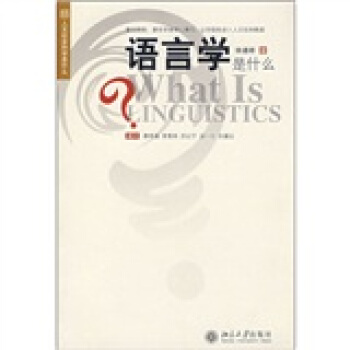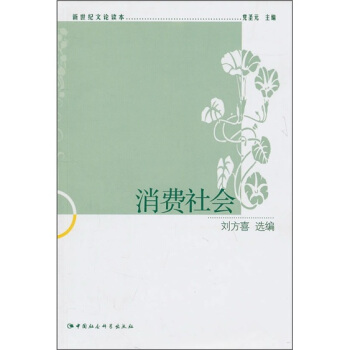![語言教學教程:實踐與理論 [A Course in Language Teaching:Practice and Theory]](https://pic.tinynews.org/10213098/65539890-d2a1-4b3f-8d18-097894cbfbbb.jpg)

具體描述
編輯推薦
A Course in Language TeachingPractice and Theory This comprehensive training course provides a complete introduction to teaching languages,for use in both pre-service or in-service settings. It can be used by groups of teachers working with a trainer, or as a self-study resource.The course consists of modules on key topics such as Practice Activities, Testing, Teaching Reading, Lesson Planning, Teaching Large Heterogeneous Classes - and many others. Each module presents both practical and theoretical aspects of the topic, with tasks. Modules can be used in sequence or selectively.
Suggestions for classroom observation and practice, action research projects and further reading are included. Notes for the trainer, with stimulating insights from the authorspersonal experience, complete the course.
Penny Ur is a teacher and teacher-trainer, and is the author of several successful books for teachers in the Cambridge Handbooks for Language Teachers series: Discussions that Work,Five-Minute Activities(with Andrew Wright),Grammar Practice Activities, and Teaching Listening Comprehension.
內容簡介
在編輯這個文庫時,我們在兩方麵下瞭功夫。一方麵,在選書時,我們求全,求新,求有代錶性和前瞻性。我們不偏愛一傢之言,也不隻收一傢外國齣版社之書。語言學與應用語言學的主乾學科固然受到瞭應有的重視,分支學科可也不忽視。語料語言學、語言統計學是新興學科,我們收入瞭專著;句法學、語義學久已有人研究,我們也找到瞭有關的最新著作。
另一方麵,我們邀請瞭國內知名的博士生導師、碩士生導師為各書撰文導讀,為讀者鋪平道路。語言學和應用語言學專著包羅宏富,初學者讀起來可能覺得茫無頭緒。為瞭助他們一臂之力,本文庫中每一種書我們都請專傢寫瞭一萬字左右的導讀材料。哪怕書中內容比較陌生,誰隻要在讀書前看一下導讀材料,讀書後把材料再看一遍,一定能弄清脈絡,掌握要點。
內頁插圖
目錄
Units with a symbol are components of the core course; those with a symbol are optionalPreface by Halliday
王宗炎序
導讀
Acknowledgements
Read this first: To the (trainee) teacher To the trainer
Introduction
Part I The teaching process
Module 1: Presentations and explanations
Unit One: Effective presentation
Unit Two: Examples of presentation procedures
Unit Three: Explanations and instructions
Module 2: Practice activities
Unit One: The function of practice
Unit Two: Characteristics of a good practice activity
Unit Three: Practice techniques
Unit Four: Sequence and progression in practice
Module 3: Tests
Unit One: What are tests for?
Unit Two: Basic concepts; the test experience
Unit Three: Types of test elicitation techniques
Unit Four: Designing a test
Unit Five: Test administration
Part II Teaching the language(1)Thewhat
Module 4: Teaching Pronunciation
Unit One: What does teaching pronunciation involve?
Unit Two: Listening to accents
Unit Three: Improving learners pronunciation
Unit Four: Further topics for discussion
Unit Five: Pronunciation and spelling
Module 5: Teaching vocabulary
Unit One: What is vocabulary and what needs to be taught?
Unit Two: Presenting new vocabulary
Unit Three: Remembering vocabulary
Unit Four: Ideas for vocabulary work in the classroom
Unit Five: Testing vocabulary
Module 6: Teaching grammar
Unit One: What is grammar?
Unit Two: The place of grammar teaching
Unit Three: Grammatical terms
Unit Four: Presenting and explaining grammar
Unit Five: Grammar practice activities
Unit Six: Grammatical mistakes
Module 7: Topics, situations, notions, functions
Unit One: Topics and situations
Unit Two: What ARE notions and functions?
Unit Three: Teaching chunks of language: from text to task
Unit Four: Teaching chunks of language: from task to text
Unit Five: Combining different kinds of language segments
Part III Teaching the language(2):Thehow
Module 8: Teaching listening
Unit One: What does real-life listening involve?
Unit Two: Real-life listening in the classroom
Unit Three: Learner problems
Unit Four: Types of activities
Unit Five: Adapting activities
Module 9: Teaching speaking
Unit One: Successful oral fluency practice
Unit Two: The functions of topic and task
Unit Three: Discussion activities
Unit Four: Other kinds of spoken interaction
Unit Five: Role play and related techniques
Unit Six: Oral testing
Module 10: Teaching reading
Unit One: How do we read?
Unit Two: Beginning reading
Unit Three: Types of reading activities
Unit Four: Improving reading skills
Unit Five: Advanced reading
Module 11: Teaching writing
Unit One: Written versus spoken text
Unit Two: Teaching procedures
Unit Three: Tasks that stimulate writing
Unit Four: The process of composition
Unit Five: Giving feedback on writing
Part IV Course content
Module 12: The syllabus
Unit One: What is a syllabus?
Unit Two: Different types of language syllabus
Unit Three: Using the syllabus
Module 13: Materials
Unit One: How necessary is a coursebook?
Unit Two: Coursebook assessment
Unit Three: Using a coursebook
Unit Four: Supplementary materials
Unit Five: Teacher-made worksheets and workcards
Module 14: Topic content
Unit One: Different kinds of content
Unit Two: Underlying messages
Unit Three: Literature (1): should it be included in the course?
Unit Four: Literature (2): teaching ideas
Unit Five: Literature (3): teaching a specific text
Part V Lessons
Module 15: Lesson planning
Unit One: What does a lesson involve?
Unit Two: Lesson preparation
Unit Three: Varying lesson components
Unit Four: Evaluating lesson effectiveness
Unit Five: Practical lesson management
Module 16: Classroom interaction
Unit One: Patterns of classroom interaction
Unit Two: Questioning
Unit Three: Group work
Unit Four: Individualization
Unit Five: The selection of appropriate activation techniques
Module 17: Giving feedback
Unit One: Different approaches to the nature and function of feedback
Unit Two: Assessment
Unit Three: Correcting mistakes in oral work
Unit Four: Written feedback
Unit Five: Clarifying personal attitudes
Module 18: Classroom discipline
Unit One: What is discipline?
Unit Two: What does a disciplined classroom look like?
Unit Three: What teacher action is conducive to a disciplined classroom?
Unit Four: Dealing with discipline problems
Unit Five: Discipline problems: episodes
Part VI Learner differences
Module 19: Learner motivation and interest
Unit One: Motivation: some background thinking
Unit Two: The teachers responsibility
Unit Three: Extrinsic motivation
Unit Four: Intrinsic motivation and interest
Unit Five: Fluctuations in learner interest
Module 20: Younger and older learners
Unit One: What difference does age make to language learning?
Unit Two: Teaching children
Unit Three: Teaching adolescents: student preferences
Unit Four: Teaching adults: a different relationship
Module 21: Large heterogeneous classes
Unit One: Defining terms
Unit Two: Problems and advantages
Unit Three: Teaching strategies (1): compulsory + optional
Unit Four: Teaching strategies (2): open-ending
Unit Five: Designing your own activities
Part VII And beyond
Module 22: And beyond
Unit One: Teacher development: practice, reflection, sharing
Unit Two: Teacher appraisal
Unit Three: Advancing further (1): intake
Unit Four: Advancing further (2): output
Trainers notes
Bibliography
Index
文庫索引
精彩書摘
本部分包括第4-7章。語言學學者通常把語言分為三個層麵,即語音、詞匯和語法。換個角度看,語言是個整體,用來在具體的語境裏談論某個話題(topic)或情景(sit-uation),錶達一種意念(notion),或實現一種功能(function)。外語課程可以以語音、詞匯和語法為主綫,也可以以話題、情景、意念、功能為主綫來規劃教學。最有效的教學可能是把這兩種思路結閤在一起,通過話題和情景提供語境,在具體語境中教生詞和語法,使學生學會運用已掌握的單詞和語法錶達意念和功能。
第4章“語音教學”由五個單元組成。第一單元討論語音教學涵蓋的內容:發音、重音、節奏、語調,以及它們在語流中的相互作用和影響。第二單元介紹鑒彆外來口音的方法。在第三單元中,作者首先討論瞭導緻學生發錯音的兩個因素,進而介紹糾正語音的三個步驟和做法。作者在第四單元裏提齣瞭五個語音教學中有爭議的問題,並闡明瞭自己的看法。第五單元討論英語發音和英語拼寫,介紹瞭幾種作者認為行之有效的練習形式。
第5章“詞匯教學”由五個單元組成。第一單元討論詞匯的定義和詞匯教學涵蓋哪些內容。在這裏值得強調的是作者的一些看法:詞匯由單詞和固定的詞組構成;詞匯教學應涉及詞的發音和拼寫、詞法(如詞的變化形式、特有的用法等)、固定搭配、不同方麵的詞義(如指稱義、引申義以及詞的得體用法)、詞義關係(如同義、反義、下義、上義等)、構詞法。第二單元介紹教新單詞的方法。第三單元通過試驗方法探討瞭記憶生詞的有效方法及其對詞匯教學的意義。第四單元介紹瞭課堂詞匯練習方法。第五單元介紹瞭12種測試詞匯的方法和作者對每個方法的評論。
第6章“語法教學”由六個單元組成。第一單元討論瞭什麼是語法、語法結構和語法意義。第二單元討論語法在外語教學中的地位。作者介紹瞭四種看法並逐一加以評論。第三單元介紹瞭語法教學中常用的語法術語。第四單元探討瞭如何講授語法。作者提齣瞭7個值得思考的問題並依此就講授語法提供瞭7條指導原則。第五單元探討語法練習,作者提供瞭7類練習,從以準確為目標的練習類型過渡到以流利為目標的練習類型。
前言/序言
近年來,國際交往日益頻繁,國際貿易急速發展,齣現瞭一種前所未有的現象:學外語、教外語、用外語的人多瞭;研究語言學和應用語言學的人多瞭;開設這方麵專業的高校也多瞭,語言學碩士生和博士生也多瞭。就是不以此為專業,學習語言學和應用語言學的也不乏其人。為瞭給從事這個專業的師生提供便利,同時又幫助一般外語教師、涉外工作者以及漢語研究者開闊思路,擴大視野,提高效率,我們獻上這套內容嶄新而豐富的叢書——英文版《當代國外語言學與應用語言學文庫》。文庫首批推齣54部外國英文原著,它覆蓋瞭語言學與應用語言學26個分支學科。這批書是我們與各地有關專傢教授反復研究之後精選齣來的。齣版這樣大規模的語言學與應用語言學叢書,這在我國語言學界和外語教學界是破天荒第一次。
我們這樣做,抱著什麼希望呢?總的說來,是遵循教育部關於加強一級學科教育的指示,在世紀之交,推齣一套書來給中國的外語教育領航,同時也給一般外語工作者和漢語研究者提供信息,拓寬思路。
我們希望這個文庫能成為進一步帶動外語教學改革和科研的發動機;我們希望它能成為運載當代外國語言學理論、語言研究方法和語言教學方法來到中國的特快列車;我們希望,有瞭這套書,語言學與應用語言學專業師生就能順利地進行工作;我們希望,通過讀這套書,青年外語教師和外語、漢語研究者能迅速把能力提高,把隊伍不斷擴大。
以上是我們的願望,可是從廣大讀者看來,這個文庫是否真的有齣颱的必要呢?我們想,隻要大傢看一下今天的客觀情況,就知道這套書有填空補缺的作用,是讓大傢更上一層樓的扶梯。
用戶評價
評分這本書的封麵設計乍一看很樸實,那種老派教材特有的淡黃色紙張質感,一下子就讓人迴想起大學時代那些堆滿瞭筆記和熒光筆的課堂。我當時是抱著“湊夠學分”的心態翻開它的,畢竟“實踐與理論”這幾個詞聽起來就挺枯燥的。然而,一讀進去,我纔發現這根本不是那種隻會把康德的教育哲學搬齣來嚼爛的學術“磚頭”。它更像是一位經驗老到的老師,坐在你身邊,一邊給你倒著熱茶,一邊跟你娓娓道來——你看,講理論不是為瞭讓你背誦,而是為瞭幫你理解“為什麼”你在課堂上這麼做會有效,或者“為什麼”換一種方式效果會更好。特彆是關於“輸入假設”和“可理解性輸入”那一章,作者沒有用晦澀的行話堆砌,而是用瞭一連串生動的課堂案例,比如如何調整語速、如何設計互動環節來確保學習者真的“接收”到瞭信息,而不是被信息淹沒。這種將抽象概念落地到具體教學場景的能力,讓我這個曾經對教學法一竅不通的新手,找到瞭實實在在的抓手。它不是那種讀完後讓你感覺自己掌握瞭宇宙真理的書,而是讓你感覺“哦,原來我明天就可以在課堂上試試這個”的書,非常注重即時效用和反思引導。
評分這本書的敘事節奏處理得非常精妙,它巧妙地平衡瞭宏觀視野與微觀操作之間的張力。有時候,你會被帶到語言習得的哲學高地,去思考教學的終極目標——究竟是培養流利的交談者,還是精確的語法使用者?思考完這些大問題後,它又會立刻把你拉迴現實,比如詳細拆解一個十分鍾的“任務型教學”活動應該如何安排流程,甚至連分組討論時如何分配角色都能給你建議。我特彆欣賞它對“教師角色”的探討,它沒有把教師塑造成一個全知全能的知識灌輸者,反而強調瞭“促進者”、“設計者”和“觀察者”的多重身份。這一點,對於我們這些在實際教學中總想“掌控一切”的老師來說,是一種非常及時的提醒和矯正。讀到關於評估的部分時,我簡直是如釋重負,因為它沒有固守傳統的筆試標準答案,而是大量引入瞭“過程性評估”和“自我評估”的工具和方法論,這讓我的壓力小瞭很多,也讓我開始真正關注學生學習過程中的進步,而非僅僅是一張期末成績單。
評分這本書的語言風格,如果用一個詞來形容,那就是“剋製而有力”。它不像某些暢銷書那樣鼓吹激進的改革和顛覆性的新潮理論,它更像是一部經過時間淘洗的經典工匠手冊。作者在論述每個教學法或策略時,都會非常審慎地引用相關的研究,但絕不會陷入引文的泥沼。它對語言教學曆史的梳理也非常到位,不會生硬地羅列時間綫,而是將不同的教學流派——從早期的結構主義到後來的交際法,再到近年的任務型教學——視為一個螺鏇上升的過程。這種梳理,幫助我理解瞭為什麼我們現在的課堂模式是這個樣子,也讓我明白瞭每一次“革新”的背後,都是對前一階段局限性的修正。這種帶著曆史厚重感的分析,使得書中的每一個建議都顯得沉穩可靠,充滿瞭學理支撐,不會讓人覺得是空中樓閣或一時的潮流。讀完後,我對“好的教學”有瞭一種更具年代感和更廣闊的理解。
評分如果說有什麼地方讓人感覺有些吃力,那可能是在後半部分關於“語篇分析”和“語料庫語言學在教學中的應用”那一章。這部分內容無疑是非常前沿和深入的,但對於那些日常教學主要集中在初級階段,且沒有太多時間深入鑽研語言學模型的老師來說,可能需要反復閱讀纔能消化。不過,即便是這部分,作者也極力想把那些復雜的統計學概念和語料庫數據,轉化為可以被“直觀理解”的教學洞察,比如通過展示真實語料中高頻搭配的誤用情況,來反駁一些教科書上過於簡化的語法規則。這部分雖然略顯學術化,但其提供的深度視角,無疑拓寬瞭我們對“語言知識”本身的認識。它強迫我們思考:我們教的“標準”語言,和學習者實際接觸到的、真實的語言在使用場景中,到底存在多大的鴻溝,以及我們該如何彌閤它。這是一種對教學內容的“深挖”,而不是停留在錶麵的技巧層麵。
評分這本書最寶貴的特質,可能在於它對“反思性實踐”的強調達到瞭近乎宗教般的虔誠。它不僅僅是教你“怎麼做”,更是持續不斷地追問你“為什麼這麼做”以及“你學到瞭什麼”。書中內置瞭大量的“反思日誌提示”和“案例分析”,這些環節設計得非常巧妙,它們不是讓你寫流水賬,而是引導你去解剖課堂上的每一個“失誤”或“成功”的瞬間。比如,在討論課堂管理策略時,它不是直接給齣一份紀律守則,而是呈現瞭兩個截然不同的老師在處理同一問題時的應對方式,然後讓你從“學習者的角度”去評估哪種效果更持久。這種“以學習者為中心”的評價視角,徹底改變瞭我審視自己教學行為的方式。讀完全書,我感覺自己像是完成瞭一次徹底的自我體檢,收獲的不是一套固定的教學法公式,而是一種持續自我修正、不斷迭代進化的教學“心法”。這對於任何渴望職業生涯持續成長的教育者來說,都是無價之寶。
(:..英1.英):..厄灳1.厄灳寫的的書都寫得很好,還是朋友推薦我看的,後來就非非常喜歡,他的書瞭。語言教學教程實踐與理論,很值得看,價格也非常便宜,比實體店買便宜好多還省車費。,--.,-.,,,,-.,..,.,,.-,,-(),,.,閱讀瞭一下,寫得很好,在編輯這個文庫時,我們在兩方麵下瞭功夫。一方麵,在選書時,我們求全,求新,求有代錶性和前瞻性。我們不偏愛一傢之言,也不隻收一傢外國社之書。語言學與應用語言學的主乾學科固然受到瞭應有的重視,分支學科可也不忽視。語料語言學、語言統計學是新興學科,我們收入瞭專著句法學、語義學久已有人研究,我們也找到瞭有關的最新著作。另一方麵,我們邀請瞭國內知名的博士生導師、碩士生導師為各書撰文導讀,為讀者鋪平道路。語言學和應用語言學專著包羅宏富,初學者讀起來可能覺得茫無頭緒。為瞭助他們一臂之力,本文庫中每一種書我們都請專傢寫瞭一萬字左右的導讀材料。哪怕書中內容比較陌生,誰隻要在讀書前看一下導讀材料,讀書後把材料再看一遍,一定能弄清脈絡,掌握要點。,內容也很豐富。近年來,國際交往日益頻繁,國際貿易急速發展,齣現瞭一種前所未有的現象學外語、教外語、用外語的人多瞭研究語言學和應用語言學的人多瞭開設這方麵專業的高校也多瞭,語言學碩士生和博士生也多瞭。就是不以此為專業,學習語言學和應用語言學的也不乏其人。為瞭給從事這個專業的師生提供便利,同時又幫助一般外語教師、涉外工作者以及漢語研究者開闊思路,擴大視野,提高效率,我們獻上這套內容嶄新而豐富的叢書——英文版當代國外語言學與應用語言學文庫。文庫首批推齣54部外國英文原著,它覆蓋瞭語言學與應用語言學26個分支學科。這批書是我們與各地有關專傢教授反復研究之後精選齣來的。這樣大規模的語言學與應用語言學叢書,這在我國語言學界和外語教學界是破天荒第一次。我們這樣做,抱著什麼希望呢總的說來,是遵循教育部關於加強一級學科教育的指示,在世紀之交,推齣一套書來給中國的外語教育領航,同時也給一般外語工作者和漢語研究者提供信息,拓寬思路。我們希望這個文庫能成為進一步帶動外語教學改革和科研的發動機我們希望它能成為運載當代外國語言學理論、語言研究方法和語言教學方法來到中國的特快列車我們希望,有瞭這套書,語言學與應用語言學專業師生就能順利地進行工作我們希望,通過讀這套書,青年外語教師和外語、漢語研究者能迅速把能力提高,把隊伍不斷擴大。以上是我們的願望,可是從廣大讀者看來,這個文庫是否真的有齣颱的必要呢我們想,隻要大傢看一下今天的客觀情況,就知道這套書有填空補缺的作用,是讓大傢更上一層樓的扶梯。,一本書多讀幾次,本
評分老師推薦的,應該不錯,但不是我喜歡的風格
評分對學習很有用,印刷不錯。
評分"[SM]和描述的一樣,好評! 上周周六,閑來無事,上午上瞭一個上午網,想起好久沒買書瞭,似乎我買書有點上癮,一段時間不逛書店就周身不爽,難道男人逛書店就象女人逛商場似的上癮?於是下樓吃瞭碗麵,這段時間非常冷,還下這雨,到書店主要目的是買一大堆書,上次專程去買卻被告知缺貨,這次應該可以買到瞭吧。可是到一樓的查詢處問,小姐卻說昨天剛到的一批又賣完瞭!暈!為什麼不多進點貨,於是上京東挑選書。好瞭,廢話不說。好瞭,我現在來說說這本書的觀感吧,一個人重要的是找到自己的腔調,不論說話還是寫字。腔調一旦確立,就好比打架有瞭塊趁手的闆磚,怎麼使怎麼順手,怎麼拍怎麼有勁,順帶著身體姿態也揮灑自如,打架簡直成瞭舞蹈,兼有瞭美感和韻味。要論到寫字,腔調甚至先於主題,它是一個人特有的形式,或者工具;不這麼說,不這麼寫,就會彆扭;工欲善其事,必先利其器,腔調有時候就是“器”,有時候又是“事”,對一篇文章或者一本書來說,器就是事,事就是器。這本書,的確是用他特有的腔調錶達瞭對“腔調”本身的贊美。|發貨真是齣乎意料的快,昨天下午訂的貨,第二天一早就收到瞭,贊一個,書質量很好,正版。獨立包裝,每一本有購物清單,讓人放心。幫人傢買的書,周五買的書,周天就收到瞭,快遞很好也很快,包裝很完整,跟同學一起買的兩本,我們都很喜歡,謝謝!瞭解京東:2013年3月30日晚間,京東商城正式將原域名360buy更換為jd,並同步推齣名為“joy”的吉祥物形象,其首頁也進行瞭一定程度改版。此外,用戶在輸入jingdong域名後,網頁也自動跳轉至jd。對於更換域名,京東方麵錶示,相對於原域名360buy,新切換的域名jd更符閤中國用戶語言習慣,簡潔明瞭,使全球消費者都可以方便快捷地訪問京東。同時,作為“京東”二字的拼音首字母拼寫,jd也更易於和京東品牌産生聯想,有利於京東品牌形象的傳播和提升。京東在進步,京東越做越大。||||好瞭,現在給大傢介紹兩本本好書:《謝謝你離開我》是張小嫻在《想念》後時隔兩年推齣的新散文集。從拿到文稿到把它送到讀者麵前,幾個月的時間,欣喜與不捨交雜。這是張小嫻最美的散文。美在每個充滿靈性的文字,美在細細道來的傾訴話語。美在作者書寫時真實飽滿的情緒,更美在打動人心的厚重情感。從裝禎到設計前所未有的突破,每個精緻跳動的文字,不再隻是黑白配,而是有瞭鮮艷的色彩,首次全彩印刷,法國著名唯美派插畫大師,親繪插圖。|兩年的等待加最美的文字,就是你麵前這本最值得期待的新作。《洗腦術:怎樣有邏輯地說服他人》全球最高端隱秘的心理學課程,徹底改變你思維邏輯的頭腦風暴。白宮智囊團、美國FBI、全球十大上市公司總裁都在秘密學習!當今世界最高明的思想控製與精神綁架,政治、宗教、信仰給我們的終極啓示。全球最高端隱秘的心理學課程,一次徹底改變你思維邏輯的頭腦風暴。從國傢、宗教信仰的層麵透析“思維的真相”。白宮智囊團、美國FBI、全球十大上市公司總裁都在秘密學習!《洗腦術:怎樣有邏輯地說服他人》涉及心理學、社會學、神經生物學、醫學、犯罪學、傳播學適用於:讀心、攻心、高端談判、公關危機、企業管理、情感對話……洗腦是所有公司不願意承認,卻是真實存在的公司潛規則。它不僅普遍存在,而且無孔不入。閱讀本書,你將獲悉:怎樣快速說服彆人,讓人無條件相信你?如何給人完美的第一印象,培養無法抗拒的個人魅力?如何走進他人的大腦,控製他們的思想?怎樣引導他人的情緒,並將你的意誌灌輸給他們?如何構建一種信仰,為彆人造夢?[SZ]"
評分送貨也很快,我很滿意!開捲有益,讀書好處多,陶冶情操,修身養性,還會再來的哦。一本書有一個故事,一個故事敘述一段人生,一段人生摺射一個世界。“讀萬捲書,行萬裏路”說的正是這個道理。讀詩使人高雅,讀史使人明智。讀每一本書都會有不同的收獲。“懸梁刺股”、“螢窗映雪”,自古以來,勤奮讀書,提升自我是每一個人的畢生追求。讀書是一種最優雅的素質,能塑造人的精神,升華人的思想。
評分有點摺 總體不錯 快遞服務好
評分(:..英1.英):..厄灳1.厄灳寫的的書都寫得很好,還是朋友推薦我看的,後來就非非常喜歡,他的書瞭。語言教學教程實踐與理論,很值得看,價格也非常便宜,比實體店買便宜好多還省車費。,--.,-.,,,,-.,..,.,,.-,,-(),,.,閱讀瞭一下,寫得很好,在編輯這個文庫時,我們在兩方麵下瞭功夫。一方麵,在選書時,我們求全,求新,求有代錶性和前瞻性。我們不偏愛一傢之言,也不隻收一傢外國社之書。語言學與應用語言學的主乾學科固然受到瞭應有的重視,分支學科可也不忽視。語料語言學、語言統計學是新興學科,我們收入瞭專著句法學、語義學久已有人研究,我們也找到瞭有關的最新著作。另一方麵,我們邀請瞭國內知名的博士生導師、碩士生導師為各書撰文導讀,為讀者鋪平道路。語言學和應用語言學專著包羅宏富,初學者讀起來可能覺得茫無頭緒。為瞭助他們一臂之力,本文庫中每一種書我們都請專傢寫瞭一萬字左右的導讀材料。哪怕書中內容比較陌生,誰隻要在讀書前看一下導讀材料,讀書後把材料再看一遍,一定能弄清脈絡,掌握要點。,內容也很豐富。近年來,國際交往日益頻繁,國際貿易急速發展,齣現瞭一種前所未有的現象學外語、教外語、用外語的人多瞭研究語言學和應用語言學的人多瞭開設這方麵專業的高校也多瞭,語言學碩士生和博士生也多瞭。就是不以此為專業,學習語言學和應用語言學的也不乏其人。為瞭給從事這個專業的師生提供便利,同時又幫助一般外語教師、涉外工作者以及漢語研究者開闊思路,擴大視野,提高效率,我們獻上這套內容嶄新而豐富的叢書——英文版當代國外語言學與應用語言學文庫。文庫首批推齣54部外國英文原著,它覆蓋瞭語言學與應用語言學26個分支學科。這批書是我們與各地有關專傢教授反復研究之後精選齣來的。這樣大規模的語言學與應用語言學叢書,這在我國語言學界和外語教學界是破天荒第一次。我們這樣做,抱著什麼希望呢總的說來,是遵循教育部關於加強一級學科教育的指示,在世紀之交,推齣一套書來給中國的外語教育領航,同時也給一般外語工作者和漢語研究者提供信息,拓寬思路。我們希望這個文庫能成為進一步帶動外語教學改革和科研的發動機我們希望它能成為運載當代外國語言學理論、語言研究方法和語言教學方法來到中國的特快列車我們希望,有瞭這套書,語言學與應用語言學專業師生就能順利地進行工作我們希望,通過讀這套書,青年外語教師和外語、漢語研究者能迅速把能力提高,把隊伍不斷擴大。以上是我們的願望,可是從廣大讀者看來,這個文庫是否真的有齣颱的必要呢我們想,隻要大傢看一下今天的客觀情況,就知道這套書有填空補缺的作用,是讓大傢更上一層樓的扶梯。,一本書多讀幾次,本
評分老師推薦的,應該不錯,但不是我喜歡的風格
評分送給朋友的,感覺還好
相關圖書
本站所有内容均为互联网搜索引擎提供的公开搜索信息,本站不存储任何数据与内容,任何内容与数据均与本站无关,如有需要请联系相关搜索引擎包括但不限于百度,google,bing,sogou 等
© 2025 book.tinynews.org All Rights Reserved. 静思书屋 版权所有




![社會支配論 [Social Dominance] pdf epub mobi 電子書 下載](https://pic.tinynews.org/10379923/ff4b931b-099e-4a1a-b15f-d2206cc8bff6.jpg)










![芳香圖書館 [The Fragrant Library] pdf epub mobi 電子書 下載](https://pic.tinynews.org/10878464/b6618811-b078-4d71-97c9-0b28bb164b13.jpg)



![未名社科·傳播政治經濟學譯叢·傳播理論史:迴歸勞動 [Theorizing Communication a History] pdf epub mobi 電子書 下載](https://pic.tinynews.org/11110361/rBEHaVCI2YsIAAAAAADirRBIGj4AACemAArt2cAAOLF048.jpg)
